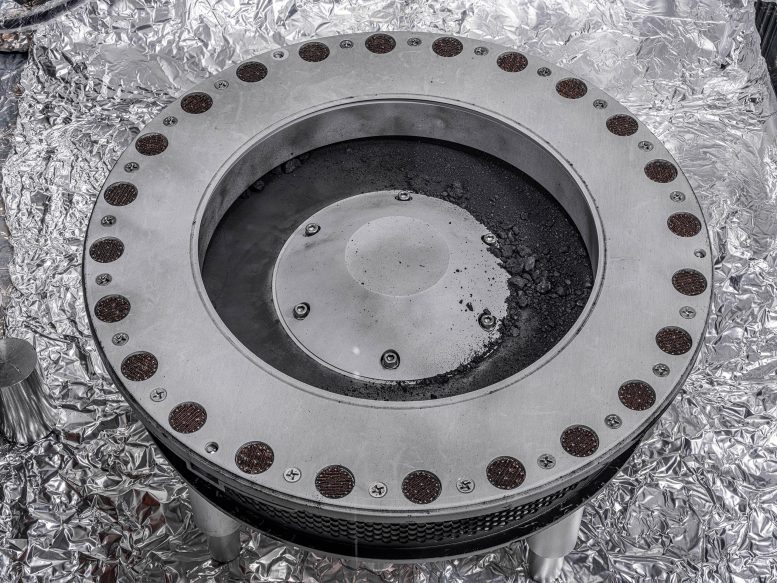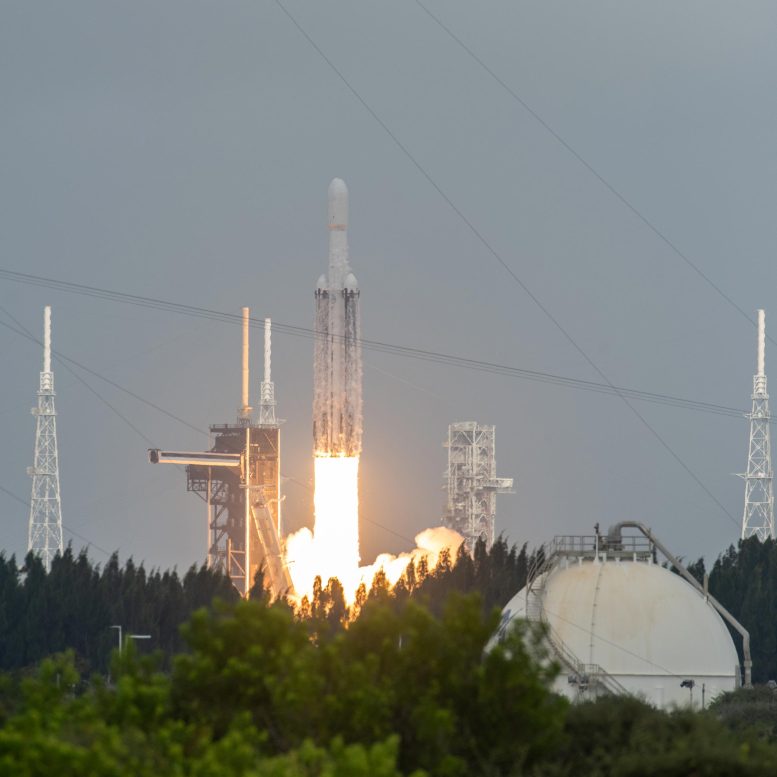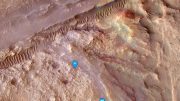
A view of the outside of the OSIRIS-REx sample collector. Sample material from asteroid Bennu can be seen on the middle right. Scientists have found evidence of both carbon and water in initial analysis of this material. The bulk of the sample is located inside. Credit: NASA/Erika Blumenfeld & Joseph Aebersold
What NASA found in some historic asteroid samples…
Discussing a record-breaking spaceflight…
And NASA’s Psyche spacecraft sets sail to study a unique asteroid…
A few of the stories to tell you about – This Week at NASA!
Revealing Historic Samples Returned From Asteroid Bennu
On October 11 at NASA’s Johnson Space Center, NASA revealed the 4.5-billion-year-old rock and dust samples from asteroid Bennu that NASA’s OSIRIS-REx mission recently delivered to Earth.
Initial studies of the sample material show evidence of water and high-carbon content – which together could indicate that the building blocks of life on Earth may be found in the rock and dust.
NASA astronaut Frank Rubio, who returned to Earth on September 27 after spending 371 days in space, discussed his historic mission in a news conference on October 13. Rubio broke the record for longest single spaceflight by an American astronaut during his mission aboard the International Space Station where he lived and worked to advance scientific knowledge and demonstrate new technologies for future human and robotic exploration missions as part of NASA’s Moon and Mars exploration approach, including lunar missions through NASA’s Artemis program. Credit: NASA Johnson
Rubio Discusses Record-Breaking Spaceflight
During an October 13 news conference at NASA’s Johnson Space Center (see video above), NASA astronaut Frank Rubio discussed his U.S. record-breaking 371-day spaceflight aboard the International Space Station.
“It makes you appreciate how unique our planet is. When you look at our planet and you realize how perfectly it works to keep – you know – all 9 billion of us alive it’s pretty incredible.”
Extended spaceflights, like Rubio’s could provide valuable data about the effects of long-duration spaceflight on the human body – as we get ready to send humans back to the Moon on Artemis missions to prepare for human exploration of Mars.

NASA’s Psyche spacecraft, atop a SpaceX Falcon Heavy rocket, lifts off from Kennedy Space Center’s historic Launch Complex 39A in Florida at 10:19 a.m. EDT on Friday, October 13, 2023. The Psyche mission will study a metal-rich asteroid with the same name, located in the main asteroid belt between Mars and Jupiter. This is NASA’s first mission to study an asteroid that has more metal than rock or ice. Riding with Psyche is a pioneering technology demonstration – NASA’s Deep Space Optical Communications (DSOC) experiment – which will be the first test of laser communications beyond the Moon. Credit: NASA/Kevin O’Connell
Psyche Spacecraft Launches to a Metal World
“And liftoff! Liftoff of Falcon Heavy and Psyche!”
Also on October 13, NASA’s Psyche spacecraft launched aboard a SpaceX Falcon Heavy rocket from NASA’s Kennedy Space Center.
Psyche is on its way to a metal-rich asteroid of the same name. The mission could teach us more about how rocky planets like Earth formed.
Watch a replay of the live broadcast as a “ring of fire” eclipse travels across the United States on October 14, 2023, from Oregon to Texas. This event occurs when the Moon passes directly in front of the Sun, but appears too small to completely cover the Sun’s surface – resulting in what appears as a ring of fire in the sky. It’s also known as an annular solar eclipse. Everyone in the contiguous 48 states will have the opportunity to see at least a partial eclipse. Credit: NASA
NASA Coverage of Annular Solar Eclipse
NASA hosted live coverage of the October 14 annular solar eclipse starting at 11:30 a.m. EDT on NASA Television, the agency’s website, and the NASA app. (See the video above.)
NASA also streamed the live coverage on several of NASA’s social media accounts.
Learn more about the October 14 annular eclipse, as well as the upcoming total solar eclipse that will occur on April 8, 2024, at science.nasa.gov/eclipses.
That’s what’s up this week @NASA.









Be the first to comment on "This Week @NASA: What Was Found in Historic Asteroid Samples & Psyche Launches to a Metal World"